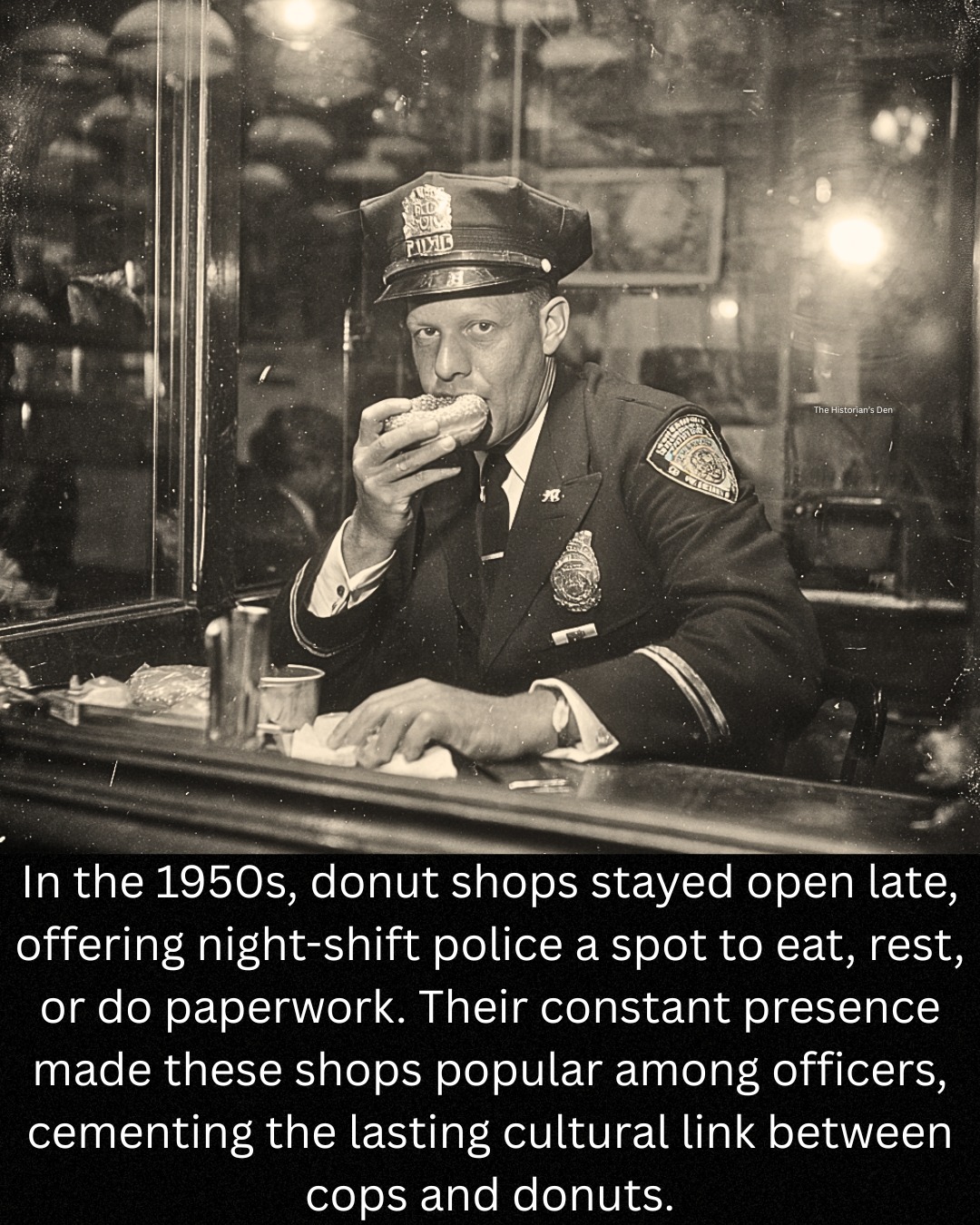
the staff of the Ridgewood blog
Ridgewood NJ, Why are police officers so often linked with donuts? This quirky cultural trope, born in the 1950s, is more than just a punchline—it’s a fascinating snapshot of mid-century urban life. As donut shops across North America began staying open late to serve night-shift workers, including cops, they became informal hubs for police activity. This mutually beneficial relationship between officers and shop owners sparked an enduring stereotype that’s still referenced in pop culture today. Dive into the sweet history behind the cop-and-donut connection and why it remains a symbol of community and convenience in 2025.
The 1950s: When Donut Shops Became Late-Night Havens
In the 1950s, North America’s growing urban workforce, particularly night-shift workers, created a demand for 24-hour eateries. Donut shops stepped up, offering warm, well-lit spaces with fresh coffee and affordable treats. Police officers, working long patrols through the night, found these shops ideal for grabbing a quick bite, filling out paperwork, or taking a break.
The convenience of donut shops—often open when other businesses were closed—made them a go-to spot for cops. Chains like Dunkin’ Donuts and Krispy Kreme, which expanded rapidly during this era, capitalized on the trend, keeping lights on and coffee brewing for late-night patrons.
A Win-Win for Cops and Shop Owners
The relationship between police officers and donut shops wasn’t just about convenience—it was mutually beneficial. Officers appreciated the reliable food and safe space to regroup, while shop owners welcomed the presence of law enforcement. A cop in the shop meant added security, deterring crime and attracting other customers who felt safer in a police-frequented spot.
This dynamic turned donut shops into informal hubs for police activity. Officers could coordinate, share information, or simply recharge, while shop owners enjoyed steady business from a loyal customer base. Over time, this practical arrangement cemented a cultural link between cops and donuts.
From Practicality to Pop Culture Icon
The image of a police officer munching on a donut quickly caught on in popular culture. By the 1960s, media portrayals—think TV shows, cartoons, and comedy sketches—began leaning into the stereotype, often with a humorous twist. The cop with a donut became a shorthand for law enforcement’s human side, blending relatability with a touch of caricature.
While the stereotype is sometimes mocked, it reflects a deeper truth about mid-century urban life: local businesses and public servants relied on each other to keep cities running. Donut shops, with their warm glow and sugary offerings, were more than just eateries—they were community anchors.
Why the Stereotype Endures in 2025
Even in 2025, the cop-and-donut trope remains a cultural touchstone. It’s referenced in memes, TV shows, and casual banter, evoking nostalgia for a time when neighborhood businesses and public servants were tightly knit. While modern policing and dining habits have evolved—officers might grab a protein shake or hit a drive-thru—the donut shop’s role as a community hub still resonates.
The stereotype also highlights the evolving relationship between law enforcement and local businesses. Today’s coffee shops and cafes often serve similar roles, offering spaces for officers to connect with communities. The cop-and-donut image, rooted in practicality, reminds us how everyday interactions shape cultural narratives.
Keywords: police stereotypes 2025, modern policing culture, community business hubs, donut shop nostalgia, law enforcement history
Celebrating the Sweet Legacy of Cops and Donuts
The next time you hear a quip about cops and donuts, remember its origins in the 1950s, when late-night donut shops became unlikely allies for police officers. This quirky piece of history isn’t just about sugary treats—it’s a story of community, convenience, and the small businesses that kept cities humming after dark. In 2025, as we navigate a fast-changing world, the cop-and-donut stereotype offers a sweet reminder of the human connections that define urban life.
Source: Historical insights into 1950s urban culture and police routines.
Tell your story #TheRidgewoodblog , #Indpendentnews, #information, #advertise, #guestpost, #affiliatemarketing,#NorthJersey, #NJ , #News, #localnews, #bergencounty, #sponsoredpost, #SponsoredContent, #contentplacement , #linkplacement, Email: Onlyonesmallvoice@gmail.com

Imagine if they had 24-hour gyms in those days instead.